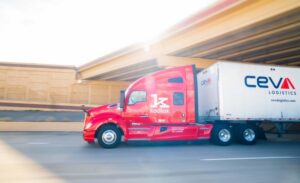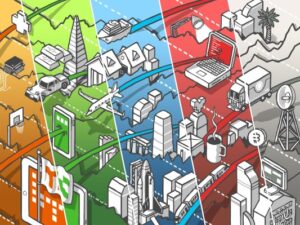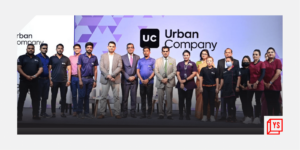It all started when Samriddhi Pandey was working on a Rolls-Royce aero engine project in Derby, in the UK as a Compressor Design Engineer. A personal story of distress acted as a catalyst for Samriddhi’s wish to address the gap in India’s emergency healthcare between service providers and beneficiaries, driving her to explore several design options to develop a solution. Samriddhi is the Founder of the bootstrapped aviation tech startup Defy Aerospace, which is one among YS’s Tech50 2021 startups showcasing 50 most promising startups from India.
But what’s the story that led to the genesis of Samriddhi’s brainchild?
“My grandmother, who was ill, needed A- blood, a rare blood group, within five hours in Varanasi. The distress that my family had to go through to bring her the blood just in time to save her compelled me to push for the technology that I was casually exploring as part of my inquisitiveness as an aircraft designer,” shares Samriddhi.
But before she could develop a product, she had to understand the “exact unmet needs” of the industry that she wanted to cater to. “With virtually limitless applications of a drone product, the inherent need to help people in areas that have limited access to emergency medicine supply seemed like an instinctively driven area to probe further into,” she shares.
After speaking to several doctors, pharma companies and distributors, big hospital chains and local authorities for about two months, Samriddhi gathered a database of healthcare issues at the heart of a country with 1.3 billion population.
Samriddhi was shaken that people in rural and tribal areas did not have access to even basic heathcare, leave along emergency healthcare, and this served as a point of frustration for her. She became bullish on fighting this issue with the requisite technical knowledge and tools, and looked at aerospace technology as a go-to, especially logistics drones, zeroing in on the following four areas:
- Blood, fresh frozen plasma, and vaccines
- Antivenoms
- Immunoglobulins
- Emergency medicine for maternal and child mortality
“This, in fact, led to establishing the values of building a technology that would either assist or save human life, and the planet that supports it. This also bolstered the decision of consciously designing newer inventions that would utilise electric propulsion systems. In March 2021, I decided to come back to India with my conceptual design — a long-range cargo drone capable of going 75km carrying 6kgs of payload,” recalls Samriddhi.
She started developing this first-of-its-kind drone technology in India with a brilliant team of engineers in Mumbai and the company Defy Aerospace Pvt. Ltd. was registered in April 2021.
Since its inception, Defy Aerospace has been developing three projects:
- Long-range cargo drone – Birdy FW
- Short-range cargo drone – Birdy M
- Multipurpose drone – Solfox
According to Samriddhi, the startup has already achieved several milestones like critical design review, prototype development, first flight, and even a move for a patent.
Delving into the drone-as-a-service space
The bootstrapped startup works with the Indian government, pharmaceutical companies and distributors, hospitals, and pathology labs, among others. The company is targeting an ARR of $680 million by 2026.
In the B2B model, Defy offers drone-as-a-service as a turnkey solution package including the drone, drone station, and a pilot, especially to customers in the pharmaceutical industry, enabling faster delivery of their products in remote regions. The startup also provides drones to companies to buy outright and provides ancillaries such as a drone station, software and a pilot, on subscription basis.
The challenges of the drone sector
Samriddhi points out that the lack of a set aircraft design regulation poses a challenge for the drone sector in India. A raw regulatory framework for commercial cargo operations for large drones and dependency on other countries, especially China, for drone electronic parts and batteries also act as barriers. There is also a severe dearth of skilled unmanned aerial vehicle (UAV) engineers, aircraft designers and nascent investments in R&D projects in India, says Samriddhi.
There is a massive opportunity for Indian electronic companies to gain a foothold in a rapidly developing market of drones in India and truly support the Make in India movement by building an ecosystem, she asserts.
The pace of revolutionising drone technology
“We are currently developing a first-of-its-kind drone technology in India and our aim is to capture 75 percent of the logistics drone market in India by the year 2025,” says Samriddhi.
“The primary competing factors that would enable our users and customers to depend on us would be the significant savings in time and cost. This would not only impact the logistics operation but their day-to-day businesses as well,” she adds.
Utilising the first mover advantage, according to the startup, Defy Aerospace is introducing reliable technology that would save lives at a cost that supports the economy of a country and uplift its startups. “Our core values are to uplift human lives and the overall ecosystem of the country. We believe in creating an environment that serves as an inclusion of the competition rather than the disruption of it,” shares Samriddhi.
Testing flight for military applications and beyond
By 2023, Defy Aerospace is looking to conduct its test flight for military applications in extreme weather conditions such as in Siachen.
In the long run, the startup plans to have its presence across India, and have an expansive network of drone stations. It hopes to have at least 75 percent of the market share in the long- and short-range drone logistics market in India, and rapidly expand globally with state-of-the-art patent technology that can challenge European and American companies both in terms of cost of production and operation, benefitting from a large labour market and an economy that supports new businesses.

![You are currently viewing [Tech50] How aviation tech startup Defy Aerospace is leveraging drones to bring emergency healthcare to all Indians](https://blog.digitalsevaa.com/wp-content/uploads/2021/12/DefyAerospace-Samriddhi-1639469629129.png)








